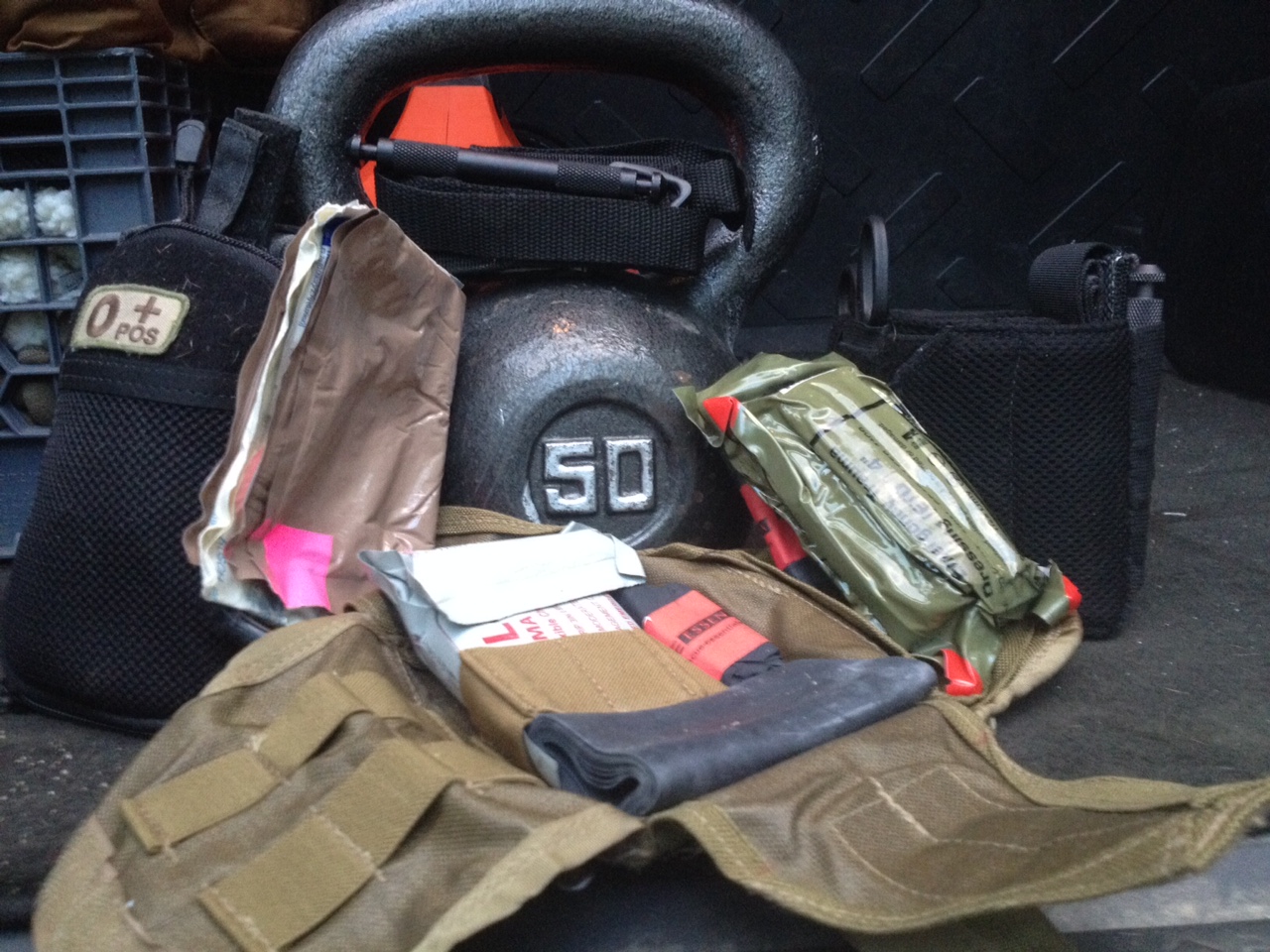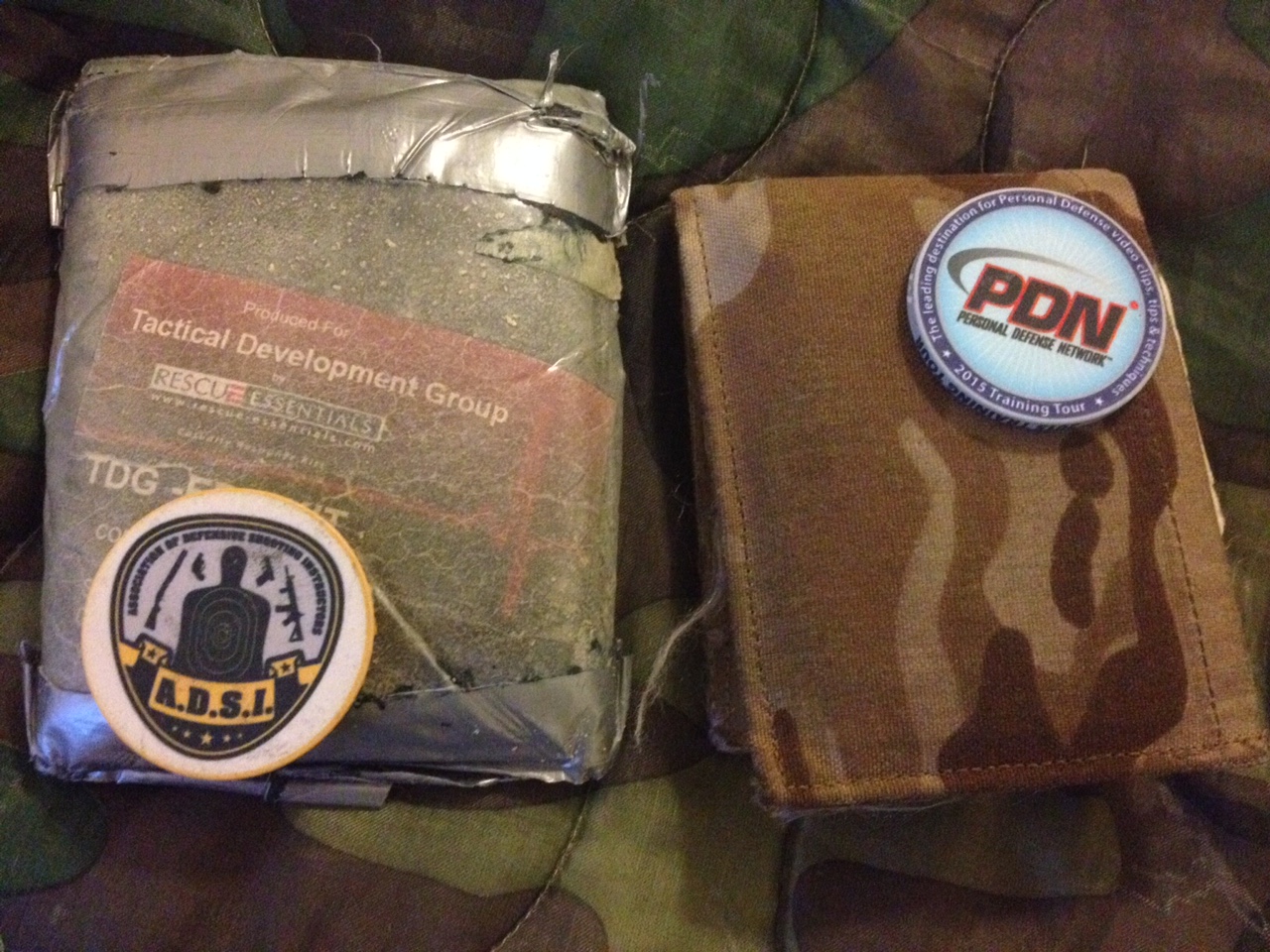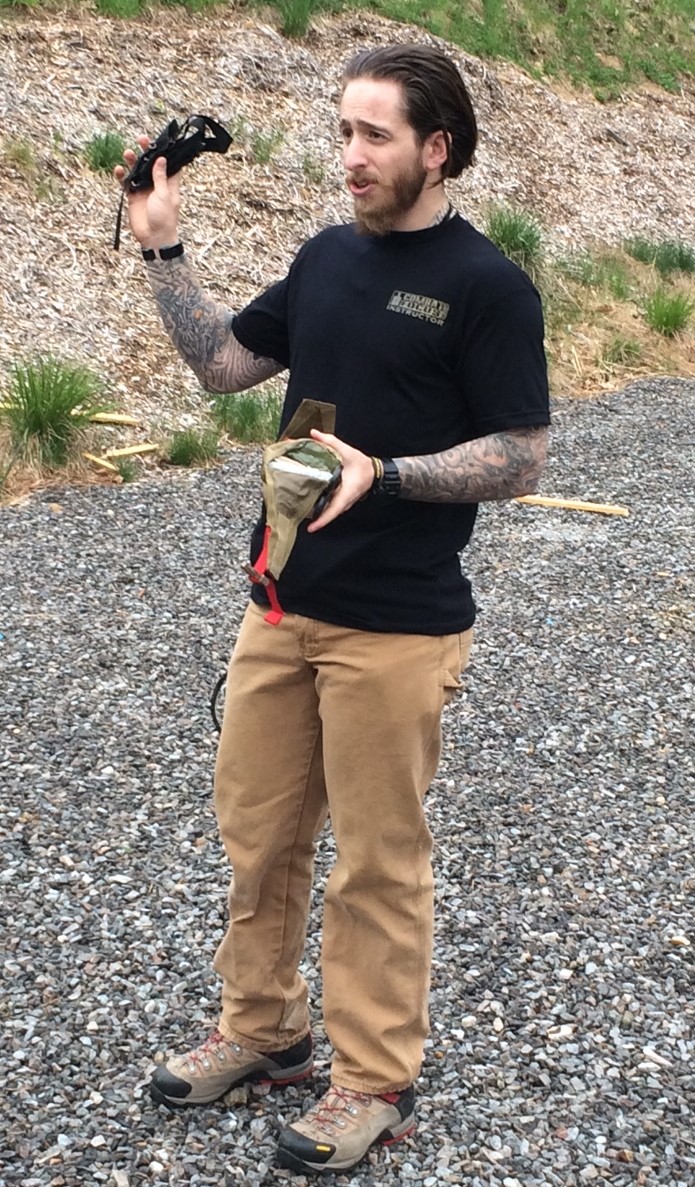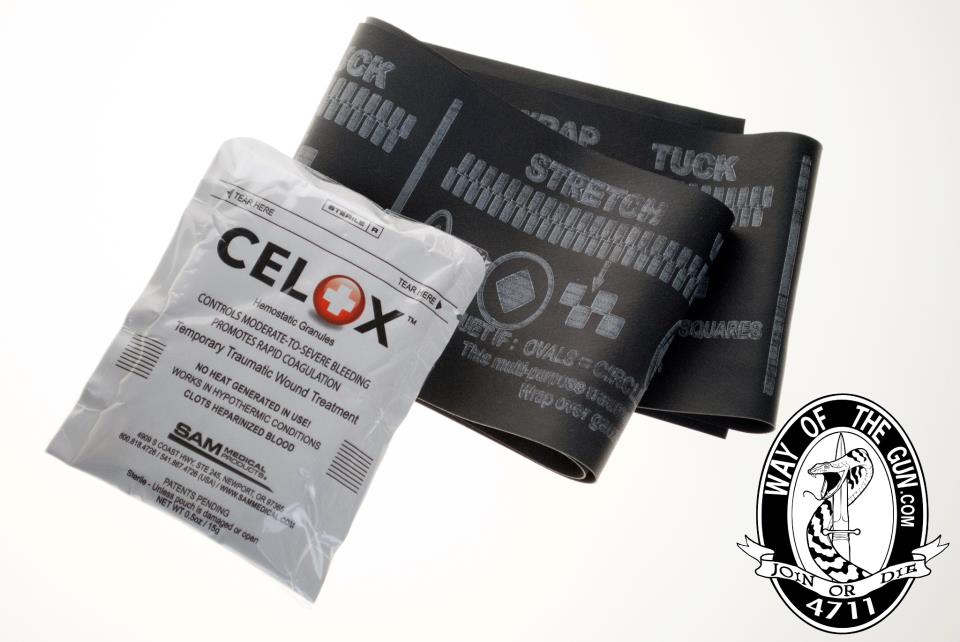
Basic medical gear can vary in size and brand, but all should be on your person, in your vehicle, or in your range bag for when you train or practice. Photo: author
www.personaldefensenetwork.comJust because we have tools that can answer the predicament of violence doesn’t mean we should not also have the basic lifesaving skills and equipment to keep someone alive until medical professionals arrive. I will go over the most common prevention methods to keep a victim from dying, what minimalist medical equipment (MME) you should have on your person, and where to find knowledgeable tactical medicine instructors.
Why Basic Medical Care Is Vital
Many variables exist during a violent encounter and its aftermath. An impact from a blunt object, the puncture of a blade, or a penetrating bullet wound may all cause instant death. These may be due to an instant lack of functioning of the Central Nervous System (CNS) in the brain, commonly found in victims with a headshot wound. Other instantly fatal injuries can include puncture or penetration of the heart or major arteries (femoral, brachial, carotid and radial).
Even if these wounds are apparent, you should still attempt to render aid to the victim, especially if they are conscious, breathing or have a pulse. Only a small percentage of people survive a gunshot wound (GSW) to the head, but it is possible, as seen here. The human body is extremely resilient, and simple measures can give the victim a chance of survival. Applying direct pressure at the point of injury may sustain life until medical professionals arrive.
As I saw when I was deployed overseas, one of the biggest killers on the battlefield — as well as of victims of GSWs or knife punctures here at home — is blood loss. At the beginning of Operation Iraqi Freedom and America’s first experience with Improvised Explosive Devices (IEDs), many survivors of the initial explosion bled out due to lack of formal training and lack of tourniquets on the troops. Many lives may have been saved if basic pressure to the wound had been applied.

Major source of expiration of the victim of a gunshot wound is blood loss. Knowing how to apply direct pressure to the wound or how to apply a tourniquet is absolutely vital. Photo: Lone Star Medics
www.personaldefensenetwork.comThe second is the infamous tourniquet, which also comes in a variety of brands and models. It was originally considered a "last option" tool if blood loss to an extremity could not be stopped by direct pressure. The thought process was that the limb the tourniquet was used on would most likely have to be amputated because the tourniquet created so much pressure and actually cut off blood flow. But during the conflicts in Iraq and Afghanistan, military doctors saw that many troops who had tourniquets applied in the field did not lose their limbs, even after having the tourniquet in place for over two hours. Therefore while deployed in the Marine Corps, I was required to have a tourniquet in my Individual First Aid Kit (IFAK). In a pinch, anything that can cinch down above the wound will work, such as the belt off your pants or the strapping used to tie down equipment in a pick-up truck.
Where To Carry It
Now that more people are carrying MME, I see many bulky rigs that are unrealistic to carry unless you wear "tactical" pants with cargo pockets or a military-style war belt. Thankfully, some companies are designing methods for you to carry all your basic MME on your person. Rogue Gunfighter makes an ankle rig called the No-Vis Ankle Medical Kit that completely conceals under any standard pair of pants. In this piece of padded nylon, the user can carry a tourniquet, pressure dressing, hemostatic agent, NPA tube, trauma gloves, and trauma shears. It doesn’t require any specific type of pants and is easy to conceal as well as access. The NVAMK can be bought "stripped" so the user can put whatever after-market medical gear they want in it, or buy it with items pre-packed.

Medical gear can be as small as the wallet you carry with you every day. Photo: author
www.personaldefensenetwork.comConcerned that this kit does not include gloves for protection from blood-borne pathogens? Down and dirty "street medicine" is just that. If you need this piece of gear to be as minimalist as possible, that’s the chance you take. Of course, thin Nitrile gloves weigh almost nothing and take up very little room, so you may choose to stick a pair of them in your pants pocket and another in your vehicle glove box. Either way, with its unobtrusive and streamlined nature, the EDC kit is a great piece of gear to have whenever and wherever you go.

Prior to starting class, firearms instructor should explain and implement basic medical gear to use in case of an incident on the range. Photo: author
www.personaldefensenetwork.comWho Should Teach Me?
Just as there’s a lot of medical gear you can buy, there are many instructors you can seek out and learn from. But as I stated in my article Evolving as Defensive Shooters, you should look for an instructor who’s evolving with the times and is giving accurate and up-to-date information. This is vital when it comes to the ever-changing medical world, where new and more efficient methods and procedures are emerging.
Along with that, train in context to what reflects your everyday life. Paying to attend a medical course that shows you how to apply basic combat medicine while clearing out a building when you actually work in a cubicle nine to five might be a bit of a stretch. Seek out a medical professional who reflects your lifestyle needs and isn’t looking to sell you the next cure-all product. If the instructor is serious about providing you with essential information, they may point you in a direction to obtain medical products from inexpensive wholesale distributors.
Even attending a quality CPR course can’t hurt and will make you more knowledgeable about the human body, especially important if you’re a parent. People I personally recommend to my students are Bill Lewitt of Tactical Development Group, Robert Smith of the Direct Action Medical Network, and Caleb Causey of Lone Star Medics. Many other competent medical professionals exist who can instruct you on the basics of casualty care on the street, but I know and trust these three from experience.
Wrapping Up
If you take personal defense seriously as an armed professional or law-abiding concealed-carrying citizen, knowing basic casualty care and how to use MME are absolutely essential. Just because you have the lethal tools to cause harm on a violent attacker doesn’t mean you or someone near you won’t be wounded. Knowing how to apply basic pressure as well as other skills may mean the difference between life and death. A cautionary example is that if someone gets cuts only a quarter of an inch below the skin along the radial artery (which lies near your wrist), they will lose consciousness in 30 seconds, and death will occur in two minutes if left untreated. You may be the only one on scene during the aftermath of a violent attack — do you have the skills to preserve life? As the old adage states, "If you know how to make holes, you should know how to plug them too."


As a former EMT, I have a complete first aid bag and bleed control kit in each of my vehicles. I also keep compact bleed control kits in my range bag and in my every day carry back pack. It came in handy a year ago when I was back country camping and sliced my thumb down to the bone with a knife. I had the items needed to stop the bleed and bandage the wound. Since it was night time, I was able to safely wait until the next day to hike out of the woods and get to a medical center.
Great information. Thanks.
First paragraph of the article: "Not too many people think about carrying items that might sustain their life or the lives of their loved ones or an innocent bystander." What about your assailant? If you are forced to shoot someone and successfully stop the threat, shouldn't you use your first aid equipment and skills to attempt to save his life?
Well presented Sir. Thanks.
I’m glad I read your article, I need to refresh my info. Thank you.
120 days ago, while shopping in a large Home Improvment Store a sheet of Sheetmetal slipped though my hand,& cut it to the bone! The store’s first aid was a wad of paper towels! I went to my truck & with the help of the store Mgr. applied Quick Clot & a pressure bandage! The hospital ER took 15 stitches in my hand!! You don’t have to be shot to need first Aid!!
Additional items to carry, which are on the same priority as the tourniquet and wound packing / hemostatic agents are a pair of chest seals - one for the front and one for the back of a penetrating chest wound. They are flat and take up almost no additional room in the FAK. Tactical Medics Group LLC has developed the BeltFAK, which is described as follows and is for sale ($130) on their facebook page: The BeltFAK is a true "Every Day Carry" Battle kit. It allows the user to rapidly deploy the contents in seconds ambidextrously with gross motor skills. There is not a kit on the market place today that allows you to carry so much in such a small package and to access it all this fast. It is the most comfortable belt trauma kit out there. No manufacturer has T&E’d a product so extensively. The BeltFAK is so comfortable that you will wear it every day and not want to take it off. Contents 1x SWAT-T Tourniquet 2 x Vented Chest Seals 1x Combat Gauze 1x Bear Claw/ Talon Gloves 1 x NPA
Where can I find basic instruction in the use of these products and where can I obtain them. I don't necessarily want extensive training but where can I get some minimal training in my area (suburb Chicago)?
C
Y'know, I've been attending refresher CPR/First Aid training as a First Responder for some years at my job (USPS) but this year I was gonna pass on it because I'm approaching 60 and felt that I was too old to be an eligible responder. After reading this article however, I will take the refresher training. Good job!